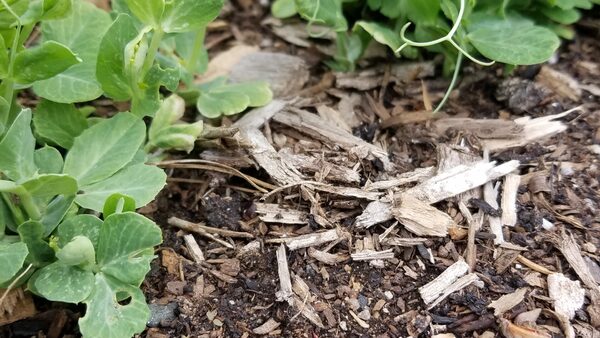You may have heard of a technique in gardening called “sheet mulching” or “lasagna gardening.” This has been touted as a great way to wipe out weeds and build rich organic soil. There are a few methods you can use when sheet mulching, depending mostly on whether you want to do shallow sheet mulching or deep sheet mulching. Shallow sheet mulching consists of a single layer of cardboard or a few sheets of newspaper, and one layer of mulch. Deep sheet mulching consists of multiple layers of paper, brown mulch, and green mulch. Learn more about sheet mulching and how it works here.
To decide which method is best for you, consider your goal for the area you intend to sheet mulch.
- Shallow sheet mulching. If you want to suppress weeds immediately around an existing garden or vegetable bed, shallow sheet mulching is probably the right choice.
- Deep sheet mulching. If you want both to suppress weeds and to prepare an area for a new garden bed, then deep sheet mulching is likely the better choice. Keep in mind that the intention of deep sheet mulching is for the materials to compost in place, which can take a year or more.
Once you’ve decided what method you would like to try, you’ll need to collect a few items.
Materials for sheet mulching
- Hose
- Supply of untreated cardboard or several stacks of newspapers. (If you use newspapers, make sure they are paper only—no plastic content.)
- You will also need a bunch of mulch to lay over the entire area at least 2 to 4 inches thick. Amounts will depend on the size of the area you want to cover.
| To calculate the amount of mulch you need, use this formula:
Square footage × desired depth ÷ 324 = cubic yards needed |
Sheet mulching step by step
STEP 1: Soak the site
The day before you put down your layers, deeply water the area you’re going to sheet mulch (if it is not already wet from rain).
STEP 2: Chop down the vegetation
Cut the grass or existing vegetation down to the ground, leaving the clippings or debris in place.
STEP 3: Put down a paper layer
Cover the area with newspaper (we typically go five or six sheets thick) or a single layer of cardboard, overlapping the edges of the paper material. Some gardeners like to wet the paper material next, but we have equal success when we skip this practice.
STEP 4: Cover with mulch
Top the paper layer with 2 to 4 inches of an organic brown mulch. This mulch can take many forms, but we often use dried leaves, shredded bark, or wood chips.
STEP 5: Add more layers
If you’re going to do deep sheet mulching, continue to add alternating layers of green materials, such as grass clippings, and brown materials, such as dried leaves or wood mulch.
STEP 6: Keep the area moist
During dry periods, give the area a thorough weekly watering while the sheet mulch is decomposing.



















Comments
Log in or create an account to post a comment.
Sign up Log in